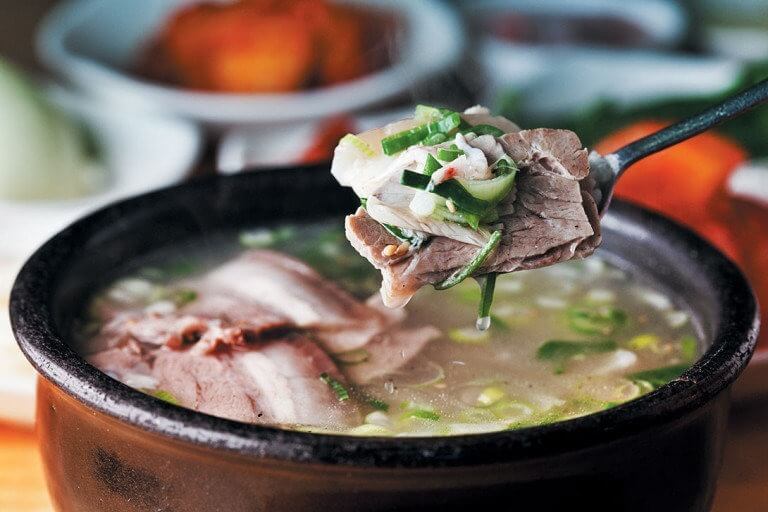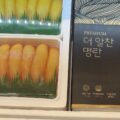7 Korean Soups for Winter

It’s cold outside. A good soup helps.
As anyone living here will have noticed, Korea loves its soups. Most Korean meals come with at least one kind of soup included in their banchan (side dishes). Whether it’s seaweed soup with a simple lunch of kimchi and rice, a dwaenjang or kimchi jiggae alongside cooked meat, or one of many other ‘guks’ – rarely will a Korean family eat a meal without a soup with which to wash it all down. A good, fairly comprehensive list of Korean soups and stews can be found here, while an explanation of the difference between ‘guk’, ‘tang’ and ‘jiggae’ is here.
But what are the best Korean soups to try this winter? Fun to make, great to share, and perfect to warm you up on a freezing day, here are Korean Gourmet Hunters’s top Korean-soup winter picks!
Gomtang (곰탕) – Oxtail Soup
Sometimes also known as ‘Gomguk’, Gomtang is a hearty, healthy soup which sees various types of beef boiled over time for maximum meaty flavor. Beef brisket, oxtail, bones, tripe and entrails simmer together to create a fantastic, heartwarming broth, which is then served with chopped green onions, rice, kimchi, and salt and pepper to taste. Many people also choose to add red pepper paste to their Gomtang to give it an extra kick.
Yukgaejang (육계장)
A popular cure for hangovers, Yukgaejang is a thicker stew-like soup, jam-packed with beef and vegetables. The soup’s spiciness certainly helps with blocked noses, while the high liquid content helps rehydrate while recovering from a cold (or heavy night out!). Yukgaejang commonly includes beef brisket, scallions, kimchi, gosari, onion, bean sprouts, garlic, soy sauce, sesame oil, red pepper, and more.
Kongnamulguk (콩나물국) – Soybean Sprout Soup
Mild, healthy, and refreshing, Kongnamulguk is a popular choice among Koreans wanting a quick and inexpensive meal. Many restaurants will serve their Kongnamulguk with a raw egg, which is then cracked into the still-simmering soup. Other side dishes common with this soup are gim (dried seaweed), kimchi, spiced radish, and rice. Although restaurant-made Kongnamulguk is usually made with anchovy broth, vegetarians wanting to make this at home can use plain water instead.
Samgyetang (삼계탕) – Whole Chicken Soup
The king of chicken soups! Samgyetang sees a whole (yet small) chicken boiled in broth and stuffed with sticky rice, ginseng, jujube, pine nuts, chestnuts, and garlic, and served with kimchi and spiced radish. Although traditionally a summer dish, Samgyetang is also the perfect pick-me-up during the coldest winter months. The added ginseng is also great for boosting the immune system.
Doganitang (도가니탕) – Ox Knee Bone Soup
The second beef-based soup on this list, Doganitang, gains its flavor from beef gelatin found in slow-cooked beef knee joints. Similar in taste to Seolleongtang, Doganitang is rich in calcium, and often given to young children, the elderly, and pregnant women.
Honghaptang (홍합탕) – Mussel Soup
A seafood lover’s favorite; Honghaptang, or mussel soup, is one of the simplest Korean soups. Mussels are simmered in a spicy broth of water, garlic, peppers, onion, and black pepper. Honghaptang is also traditionally thought to be good for female health.
Dwaeji Gukbap (돼지국밥) – Pork and Rice Soup
A Busan specialty, Dwaeji-gukbap uses pork bones to produce a meaty broth. The “bap” means rice; the soup is served with rice which you can eat separately or mix into the soup. The soup is so popular in Busan that there’s even a street full of Dwaeji-Gukbap restaurants
Honorable mentions also go to Seolleongtang, Naejangtang (fish innards soup), and Budae Jiggae – all guaranteed to heat you up from the inside out.



